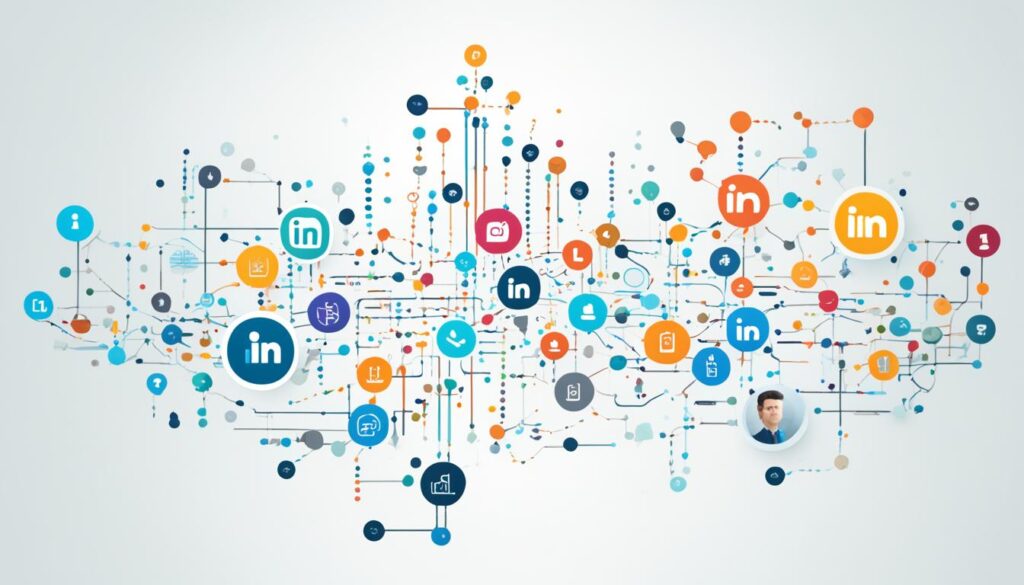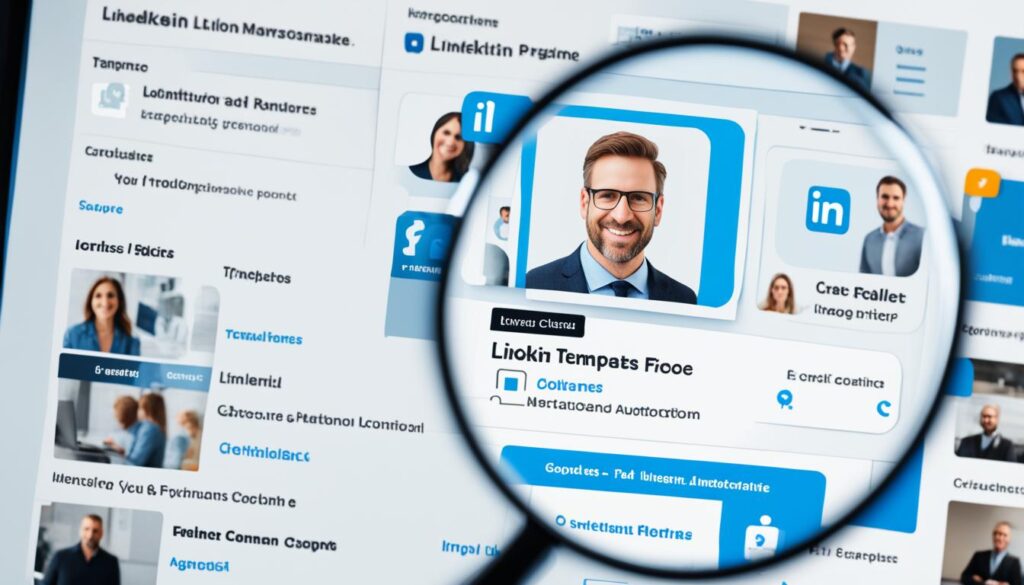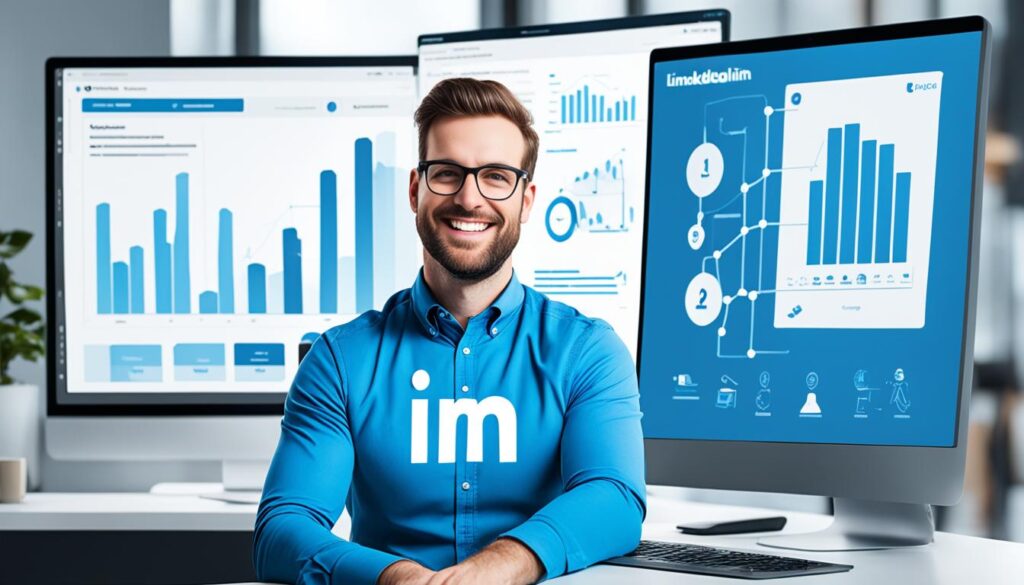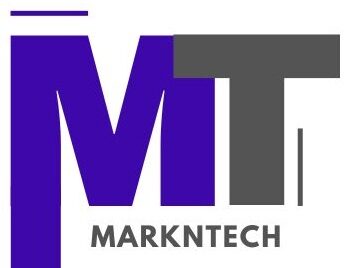I’ve seen how LinkedIn message automation changes the game. Today, in our fast digital world, automated outreach on LinkedIn is common. Finding a balance between personal touch and reaching many people is key to growth and engagement.
Last year, I led a new LinkedIn lead generation automation project for my company. We had a small team and many prospects. But with the right tools and strategy, we made our LinkedIn networking better and reached our connections in a personal way.
In this article, I’ll share what I’ve learned about LinkedIn message automation. We’ll talk about choosing tools, making personalized templates, and optimizing your campaigns. We’ll see how to automate LinkedIn messages without losing the human touch.
Key Takeaways
- Leveraging LinkedIn message automation can significantly enhance your outreach efforts and lead generation capabilities.
- Striking the right balance between personalization and automation is crucial for building genuine connections and driving meaningful engagement.
- Automated LinkedIn messaging allows you to scale your outreach while ensuring consistency and efficiency in your networking efforts.
- Choosing the right LinkedIn automation tools and implementing best practices is key to optimizing your results and staying compliant with platform policies.
- Continuous optimization, testing, and feedback are essential for refining your LinkedIn automation strategy and achieving long-term success.
Introduction
In today’s fast world, making your LinkedIn messages personal is key. It helps you build strong connections and get more engagement. But, sending out lots of messages by hand can be hard and slow. That’s why LinkedIn message automation is useful. It lets you send personalized messages to many people at once and make your LinkedIn outreach easier.
Importance of Personalization in LinkedIn Messaging
Personalizing your LinkedIn messages helps you stand out. It makes your messages feel real and builds stronger connections. You can do this by using the person’s name or by showing you know their work and problems.
This kind of personalized LinkedIn outreach makes people more likely to answer you. It also builds trust and credibility with your connections.
Benefits of Automating LinkedIn Messages
Automating your LinkedIn messages has many perks. It makes sending messages easier, gets you more engagement, and saves time. Automation tools do the work of making and sending personalized messages for you.
This lets you focus on making important connections and growing your network. With the help of LinkedIn message automation, you can reach more people while still keeping your messages personal. This leads to more meaningful connections and helps you meet your career goals.
“Automation can enhance communication by maintaining a consistent, professional tone in messages and reducing errors that may occur when handling tasks manually.”
1. Choosing the Right Automation Tool
Choosing the right LinkedIn automation tool is key for your business. These tools have many features to help you. They let you personalize your messages and streamline your work. But, with so many options, picking the right one is important.
Key Features to Look For
Look for these key features in LinkedIn automation tools:
- Personalization: Customizable messages with fields like name or job title make outreach feel real.
- Scheduling and Sequencing: Tools that let you schedule and follow up automatically are very useful.
- Engagement Tracking: Good analytics help you see what works and improve your strategy.
- Compliance Safeguards: Make sure the tool helps you follow LinkedIn’s rules, like message limits.
Popular LinkedIn Automation Tools
Popular tools include Success.ai, Yesware, Mailshake, Woodpecker, and Lemlist. Each tool has its own features, so pick the one that fits your needs.
Ensuring Compliance with LinkedIn Policies
Make sure your LinkedIn automation tools follow the platform’s rules. This means not sending too many messages and staying away from spam. Watch your automated actions and adjust them to keep within LinkedIn’s guidelines.
| Tool | Pricing | Key Features |
|---|---|---|
| Success.ai | Starts at $99/month | AI-powered personalization, outreach sequencing, analytics |
| Yesware | Starts at $15/user/month | Email tracking, dynamic content, campaign management |
| Mailshake | Starts at $59/month | Personalized outreach, multi-step sequences, mail merge |
| Woodpecker | Starts at $49/month | Cold email campaigns, personalization, engagement tracking |
| Lemlist | Starts at $39/month | Multi-channel outreach, personalized LinkedIn messages, automation |

2. Segmenting Your Audience
Starting your LinkedIn outreach means segmenting your audience well. Segmenting your audience means putting your prospects into groups that share traits and interests. This way, you can make your messages and outreach fit each group perfectly.
Identifying Key Segments
To segment your LinkedIn audience, look at your LinkedIn analytics and CRM data. Find patterns and common traits among your connections and leads. Look at job titles, industries, company sizes, and how much they engage with your content. This helps you find the main groups to focus on.
Creating Detailed Audience Profiles
After picking your main segments, make detailed profiles for each one. Collect as much data-driven info as you can. This includes demographics, what they like, and how they behave. This gives you a full picture of your target audience. It helps you make outreach campaigns that really speak to them.
Tailoring Messages to Each Segment
With your audience and profiles ready, it’s time to make personalized LinkedIn messages for each group. Use dynamic fields and templates to change your messages based on who you’re talking to. This way, your LinkedIn outreach will hit the mark for every potential customer.
“Proper audience segmentation is the key to unlocking the full potential of LinkedIn automation. By understanding your target segments and tailoring your messaging accordingly, you can achieve significantly higher engagement and conversion rates.”
3. Crafting Personalized Templates
Using personalized templates with dynamic fields can make your LinkedIn outreach more effective. These templates can automatically fill in the recipient’s name, company, job title, and more. This makes your messages feel more personal and unique.
This level of personalization can make your outreach more noticeable. It can also help build stronger connections with your audience.
Using Dynamic Fields for Personalization
When making personalized LinkedIn message templates, use a friendly tone. Highlight what you offer and be clear about what you want them to do next. Stay away from generic or too salesy language.
Always check your templates for mistakes. Try different ways to see what works best. Then, keep improving your outreach based on what you learn.
Best Practices for Message Templates
- Use the recipient’s name, company, and job title to make it personal.
- Find something you both like or a common problem to connect over.
- Explain how you can solve their specific problems.
- Be clear about what you want them to do next, like setting up a call.
- Keep your message friendly and interesting.
- Make sure there are no spelling or grammar mistakes.
Examples of Effective Templates
Good templates start with something you share with the recipient. Then, introduce your company or what you offer. Finally, tell them what to do next, like setting up a call or visiting your site.
Your tone should be friendly and show you understand their needs. You should also explain how you can help them.
| Example Template 1 | Example Template 2 |
|---|---|
| Hi [First Name],
I noticed we’re both connected to [Mutual Connection Name] and I was intrigued by your background in [Recipient’s Job Title]. I’m the founder of [Company Name], and we help [Target Audience] with [Value Proposition]. Would you be open to a quick call to discuss how we might be able to assist your team with [Relevant Pain Point]? I’m available this Thursday at 3 pm or Friday at 10 am. Let me know what works best for you. |
Hello [First Name],
I came across your profile and was impressed by your experience as a [Recipient’s Job Title] at [Recipient’s Company]. As the CEO of [Company Name], I’m always on the lookout for talented professionals like yourself who could benefit from our [Product/Service]. Would you be interested in learning more about how we’ve helped other [Target Audience] improve [Relevant Benefit]? I’d be happy to schedule a brief call at your convenience. |

“Personalization is crucial for sales success on LinkedIn rather than robotic generic messages.”
4. Setting Up Automation Sequences
When you plan your LinkedIn outreach, it’s key to set up automation sequences well. This lets you personalize your messages for many people. By making your workflows smart, picking the best times to send messages, and using good follow-ups, you can grow your LinkedIn connections. This helps you get more meaningful interactions.
Designing Your Outreach Workflow
First, plan your LinkedIn outreach workflow. This might include sending a connection request, a follow-up, and more messages to build strong relationships. Think about what your buyers go through and make your sequences fit their journey.
Timing and Frequency of Messages
How you time and send your LinkedIn messages matters a lot. Try different ways, like sending requests and follow-ups at certain times, to see what works best. Watch how people react to your messages to make them better. This keeps your outreach useful and interesting to your connections.
Including Follow-Up Messages
Adding thoughtful follow-ups to your LinkedIn automation is key for keeping people engaged and building stronger bonds. Make your follow-ups relevant to what people have done before. This makes you stand out, shows you care, and boosts your chances of making a sale.
| Key Considerations for Effective LinkedIn Automation Sequences | Best Practices |
|---|---|
| Designing your outreach workflow |
|
| Optimizing timing and frequency |
|
| Crafting effective follow-up messages |
|
By designing smart LinkedIn outreach workflows, picking the best times for messages, and adding personalized follow-ups, you can use automation to grow your connections. This helps you get more meaningful interactions at a large scale.
5. Analyzing and Optimizing Campaigns
To make your LinkedIn message automation work well, track important metrics and check your campaigns often. Use data to see what works with your audience and what needs to get better.
Tracking Key Metrics
Watch how your LinkedIn message automation is doing. Look at connection rates, how many people open and click on your messages, response rates, and conversions. This info shows how well your outreach is doing and where you can do better.
A/B Testing Different Approaches
Use A/B testing to try out different parts of your LinkedIn message automation. This could be subject lines, what you write in your messages, or what you ask people to do next. See which ways work best to get your audience’s attention and meet your goals, like making connections or booking meetings.
Continuously Improving Based on Feedback
Keep an eye on how your LinkedIn message automation is doing and ask your connections for feedback. Use this feedback to make your messages better, change how often you reach out, and improve your strategy. By always learning and changing, you can keep your LinkedIn outreach relevant, personal, and effective in getting the results you want.
| Automation Tool | G2 Review Score | Key Features |
|---|---|---|
| Letterdrop | 4.9/5 | Automated messaging, personalized outreach, CRM integration |
| Salesflow | 4.7/5 | Lead generation, automated connection requests, data-driven analytics |
| Expandi | 4.8/5 | Campaign scheduling, advanced targeting, CRM integration, customer support |
Looking at these LinkedIn automation tools helps us see what users like and think about them. This gives us good advice on picking the best tool for your LinkedIn outreach.

“Consistent learning and adaptation are key to ensuring your LinkedIn outreach remains effective and impactful over time.”
6. Balancing Automation and Human Touch
LinkedIn automation helps with outreach, but it’s key to balance it with personal touch. I’ve learned that knowing when to step in is vital. This keeps your connections real and deep.
Knowing When to Intervene Manually
Keep an eye on your LinkedIn campaigns and act when needed. Sometimes, a personal touch is necessary. This could be answering specific questions or offering tailored advice. Finding the right mix of automation and personal interaction is key.
Maintaining Authenticity in Automated Messages
Automation doesn’t mean losing your true voice. Make sure your LinkedIn messages sound real and match your brand’s style. This approach builds trust and deepens connections with your audience.
Personalizing Follow-Ups Based on Responses
When someone replies to your LinkedIn message, make your next move personal. Remember their comments and adjust your response. This shows you care and keeps the connection growing.
Using LinkedIn automation and human touch together creates a powerful outreach. It builds strong connections and helps your business grow.

Finding the right balance between automation and personalization is key to LinkedIn success. It’s a careful process, but it pays off. If you need help, I offer a free 30-minute consultation to talk about your goals.
7. Ensuring Data Privacy and Security
Using LinkedIn automation tools means keeping your contacts’ personal info safe. It’s key to follow best practices to keep trust and follow laws like GDPR and CCPA. This keeps you in line with data protection rules.
Protecting Recipient Information
Make sure you get clear consent from your LinkedIn contacts before using their data. Tell them how you’ll use their info and let them choose to opt-out. Use strong data anonymization to keep identities safe and prevent misuse.
Complying with Data Protection Regulations
Learn about the laws that cover your LinkedIn outreach. Know how to get consent, secure data, and keep records of your data use. Keep up with law changes to make sure your automation is legal.
Best Practices for Data Management
Set up strong data management rules for your LinkedIn contacts’ info. Securely store data and limit who can see it. Update your data rules often and teach your team about privacy. Use encryption and other security steps to keep your data safe.
Putting data privacy and security first in your LinkedIn automation builds trust. It keeps you in line with laws and makes sure you use personal info right in your outreach.
“Protecting the privacy and security of our users’ personal information is a top priority for LinkedIn. We take a proactive approach to data management and compliance to ensure our platform remains a trusted and secure environment for professional networking and engagement.”
8. Leveraging LinkedIn Features for Better Engagement
To make the most of LinkedIn, use its strong tools like LinkedIn Sales Navigator. This tool helps you find the best people for your messages. Use Sales Navigator’s data to make messages that speak to your audience.
Using LinkedIn Sales Navigator
LinkedIn Sales Navigator is a top feature for sales pros. It gives you lots of data and ways to target. Use it to find and connect with the right people for your business.
It lets you search and filter to focus on the best prospects. This means you can send messages that really hit the mark.
Engaging with Content Before Outreach
Before sending automated messages, take time to interact with others’ content. Like, comment on, or share their posts to show you care. This builds a connection and makes your messages more welcome.
Utilizing LinkedIn Analytics
Use LinkedIn’s analytics to make your outreach better. Look at things like how many people accept your connection, open your messages, and click on them. This helps you see what works and what doesn’t.
Then, use this info to make your messages and strategy better. This way, you can get the most out of LinkedIn for your business.
| LinkedIn Automation Tool | Key Features | Pricing |
|---|---|---|
| LinkedIn Sales Navigator | Advanced search, lead recommendations, account insights | $99.99 monthly |
| Jasper AI | Content creation, messaging optimization, analytics | $49 per seat per month |
| ChatGPT | Natural language processing, content generation, task automation | $20 per month |
| Dripfy | Automated outreach sequences, email and LinkedIn integration | $59 per month |
By using LinkedIn’s strong tools and analytics, you can make your LinkedIn messages more targeted and effective. This leads to better engagement and more conversions for your business.

9. Success Stories and Case Studies
Looking at real examples and deep case studies gives us great insights. It shows us what strategies work best with LinkedIn message automation. By seeing what industry leaders do, we can learn how to make automated LinkedIn campaigns that work well.
Examples of Successful Automated Campaigns
Many companies and experts have used LinkedIn message automation to get great results. For example, ECS Publishing Group saw a 10% growth in. LandCafe.pl got a 54% sales rate from their emails. TechSoup Polska’s email campaigns brought in more orders. And MobileFun used automation and tested different emails to improve sales.
Lessons Learned from Industry Leaders
Learning from LinkedIn automation experts gives us great advice. Selsey got 2x more conversions from their cart reminder emails. Allakando split their list into eight groups and used ten custom fields. ECS Publishing Group got a 60.12% open rate and a 7.96% click-through rate. And LesFrenchies Travel saw a 50% open rate in their emails.
Strategies That Worked Best
Looking at what tactics work best for LinkedIn automation can help us. InfoShare Academy got 1200 new contacts in a month for just 1.31 PLN each. Thibaut Souyris got a 38% reply rate and 11% meeting rate with a LinkedIn message. These tips can help us make our own LinkedIn campaigns better.
“Using trigger-led messages can help gauge the needs, motivations, and pain points of prospects, while consistent follow-ups are vital to the sales process. Incorporating funny follow-up messages can aid in re-engaging leads.”
– Alan Ruchtein, LinkedIn Automation Expert
10. Future Trends in LinkedIn Message Automation
The world of LinkedIn message automation is always changing. I need to keep up with new technologies and tools. This means looking into things like artificial intelligence, natural language processing, and predictive analytics.
These innovations will make my automated outreach more personal and targeted. This helps me keep my LinkedIn strategy strong and competitive in the digital world.
Emerging Technologies and Tools
In the next decade, LinkedIn message automation will likely change a lot. Things like how users behave, new platform features, and changes in laws will affect it. I’ll need to focus more on keeping user data safe, working better with other marketing tools, and using AI for better personalization.
Getting ready for these changes will help me stay ahead. It will also make sure my LinkedIn automation strategy works well for a long time.
Predictions for the Next Decade
To make sure my LinkedIn automation stays strong, I’ll keep an eye on industry trends and platform updates. I’ll also regularly check my strategies. Using flexible automation tools that can change with the times is key.
Understanding the future of LinkedIn automation tools is important. By getting ready for new innovations in LinkedIn outreach, I can keep my approach working well. This keeps my brand interesting to my audience on LinkedIn.
Preparing for Future Developments
Looking forward to the next decade of LinkedIn outreach, I’ll be ready to adapt. I’ll keep learning about LinkedIn automation and its future trends. This way, I can make sure my outreach stays effective and my brand stays relevant to my audience.
FAQ
What are the key features to look for when choosing a LinkedIn automation tool?
Look for tools that let you personalize messages and schedule outreach. Also, track engagement and follow LinkedIn’s rules.
What are some popular LinkedIn automation tools?
Popular tools include Success.ai, Yesware, Mailshake, Woodpecker, and Lemlist. They help streamline your outreach.
How can I ensure compliance with LinkedIn’s policies when using automation tools?
Follow daily message limits and avoid spam. Keep your engagement real and adjust your automated processes as needed.
How can I effectively segment my LinkedIn audience?
Use LinkedIn analytics and CRM data to find key audience groups. Look at job titles, industries, company size, and past engagement. Then, tailor your messages and strategies for each group.
What are some best practices for creating personalized LinkedIn message templates?
Use a warm tone and highlight what you offer. Include a clear call-to-action. Avoid generic language and check your templates for errors.
How can I effectively incorporate follow-up messages into my LinkedIn automation sequences?
Make your follow-ups relevant to the recipient’s past interactions. This shows you care and can increase your chances of success.
How can I track the performance of my LinkedIn message automation campaigns?
Watch for connection rates, open rates, click-throughs, responses, and conversions. This helps you see what works and what doesn’t.
How can I balance automation and human touch in my LinkedIn outreach?
Keep an eye on your automated campaigns and engage personally when needed. Use a real tone in your messages and personalize follow-ups.
How can I ensure data privacy and security when using LinkedIn automation tools?
Follow data protection laws by anonymizing data and getting consent. Be open about how you use their info to build trust.
How can I leverage LinkedIn’s features to enhance my automated outreach?
Use LinkedIn Sales Navigator to find the right prospects. Engage with your connections’ content first. And, use the platform’s analytics to improve your campaigns.
Source Links
- How To Automate LinkedIn Messages (Practical, Step-By-Step guide)
- Automate LinkedIn Messages In 4 Steps + 3 Proven Templates
- The Only Tool You Need to Automate LinkedIn Messages in 2024
- The Complete Guide to LinkedIn Automated Messaging (2023)
- LinkedIn Message Automation Playbook [42% RR Example]
- How to Automate LinkedIn Messaging: 5 Best Automation Tools
- Best LinkedIn Automation Tools: 2024 Ultimate Guide
- 10 Best LinkedIn Automation Tools In 2024
- 15+ Best LinkedIn Automation Tools for Lead-Generation
- LinkedIn Automated Messaging: The Ultimate Guide & Best Practices
- How do you segment and target your audience using marketing automation?
- How do you segment your audience and personalize your messages?
- Perfect LinkedIn Message: Best Practices [+3 Templates] | Dripify
- How to write LinkedIn prospecting messages [28 templates]
- 💡LinkedIn Message Automation – The Why, Whats & Hows – Expandi
- How to Automate LinkedIn Messages [Step-By-Step Guide]
- LinkedIn Message Automation: The Definitive Guide
- Automate LinkedIn Messages In 4 Steps + 3 Proven Templates
- 5 Best LinkedIn Automation Tools That Will Skyrocket Your Lead Generation
- 5 Top LinkedIn automation software 2024
- 10 Best LinkedIn Automated Messaging Tools | Letterdrop
- ❤️ Human Touch vs. 🤖 AI: Balancing Automation and Authenticity in Social Selling on LinkedIn
- Striking the Balance Between Automation and Human Touch
- How do you balance automation and human touch in your email communication?
- How do you ensure data privacy with marketing automation?
- API Automation Security: Best Practices for Ensuring Data Integrity and Privacy
- Your ultimate guide to LinkedIn automation
- The 14 Best LinkedIn Automation Tools In 2024
- 8 LinkedIn Automation: Pros and Cons of Top Tools
- The 8 Top LinkedIn Automation Tools
- 9 Email Marketing Case Studies to Inspire Your Success
- 9 LinkedIn Message Examples: Templates For SDRs
- 9 LinkedIn Ad Case Studies That Marketers Can Learn From
- 10 Best LinkedIn Automation Tools For Lead Generation In 2024
- LinkedIn Marketing Automation Tools: Reaching Your Targets With Less Efforts
- Dux-Soup LinkedIn Automation – What’s ahead for 2024?
